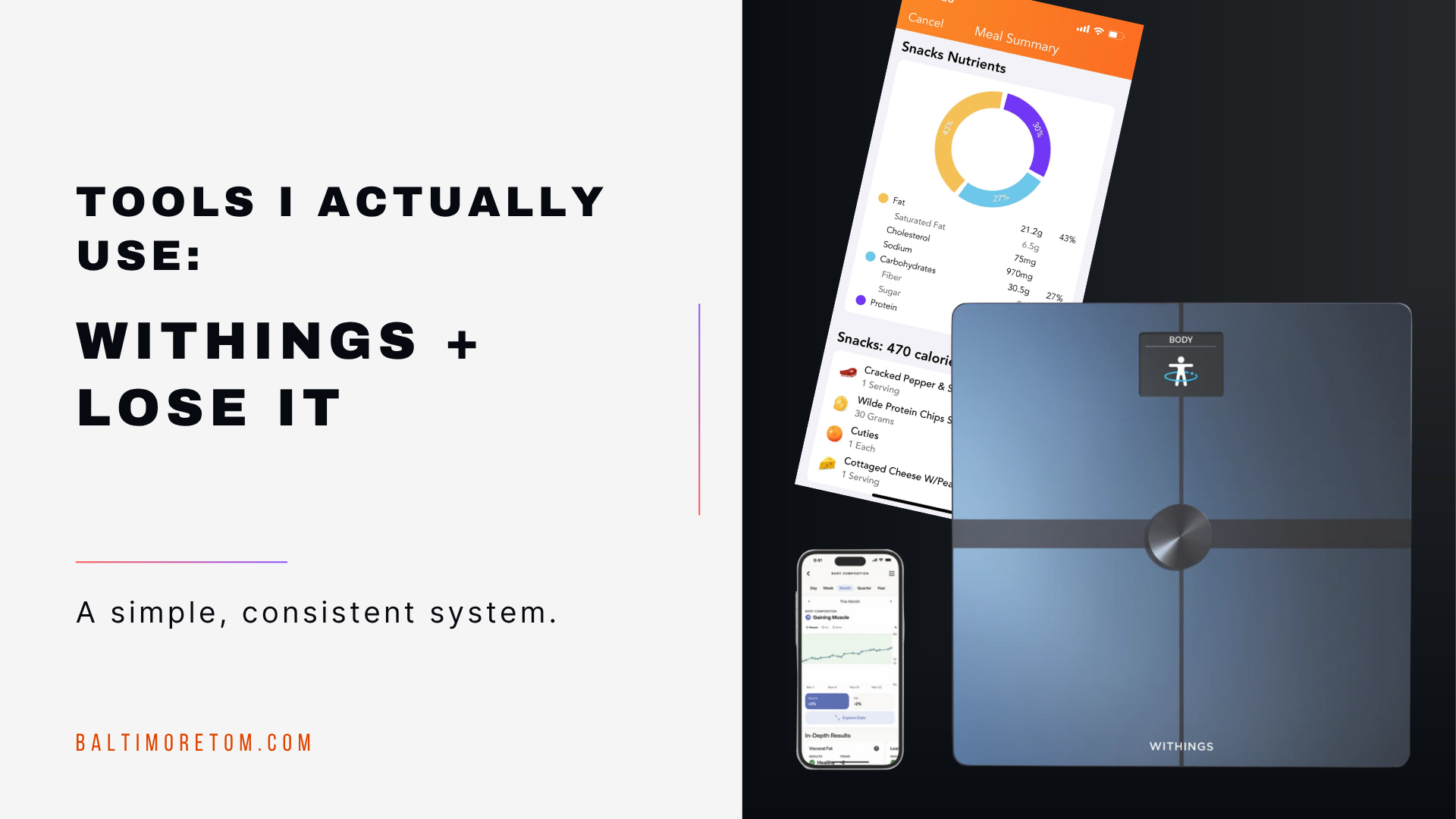Tools I Actually Use: Withings + Lose It

TL;DR
Every morning I weigh myself right after using the bathroom. The Withings Body Smart scale logs my weight automatically to the Lose It app, which tracks my calories, exercise, and weight. I copy the Lose It Daily Summary email into a ChatGPT project that builds a running log and shows trends over time. All of it syncs to Apple Health, where I review the data each week as part of my health check-in.
Provided by Claude Sonnet 4
Tools I Actually Use: Withings + Lose It
For a long time, I thought of health tracking as one of those things that sounded useful but never quite fit. I wanted to understand my progress without constantly managing another system. Over time, I built a setup that runs mostly on its own. It collects what matters and keeps it organized without asking for much attention.
Morning Routine
Each morning starts with the same simple step. I weigh myself right after using the bathroom. The Withings Body Smart scale connects over Wi-Fi and sends the reading to the Withings app, which syncs it with Lose It and Apple Health. In a few seconds, it records my weight, body fat, muscle mass, and visceral fat. I hardly think about it now. The habit has become so automatic that it feels like part of the morning itself.
Daily Review
When I open my laptop, the Lose It Daily Summary email is usually waiting. It shows what I ate, how active I was, and how the numbers balanced out. I copy that message into a ChatGPT project I built to track my health. Each new entry adds to a growing record that updates itself quietly in the background.
Throughout the day I log my meals in Lose It. The app keeps a running total of calories consumed and shows how many remain. When I walk or work out, the total adjusts automatically. The numbers aren’t there to judge me—they’re there to remind me what’s real. Over time it has shifted from calorie counting to awareness, a quiet kind of mindfulness about what I’m eating and how it affects me.
Why It Works
Withings and Lose It fit the way I like to work. Each one handles a small part of the process, and together they form a complete loop that doesn’t need much from me. The data flows where it needs to go, and I focus on the habit itself.
Tracking this way has become a quiet routine. It keeps me aware of my choices without turning health into another project. The longer I’ve done it, the more I’ve realized that progress depends less on willpower and more on showing up. A small, repeated action each morning builds into something steady. A rhythm that feels natural to keep.
See all posts in the Tools I Actually Use series →